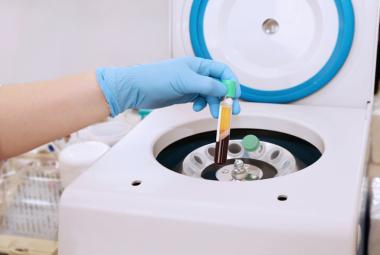In 2003, a report was published which reviewed the poisoning of newborns by the inadvertent use of intramuscular or oral methylergonovine (at adult doses) directly in infants. Thirty-four cases were reviewed in Belgium where methylergonovine was accidentally administered orally or intramuscularly directly to infants.1 The intramuscular injections produced severe complications as would be expected.
Because infants have accidentally received injections of methylergonovine instead of vitamin K or hepatitis B vaccines in hospital settings, Novartis Pharmaceuticals, who formerly made Methergine (methylergonovine), recently warned healthcare professionals about the “inadvertent” injection of Methergine directly in infants.2 Novartis also notified the FDA of their discontinuation of the sale of Methergine tablets and injections. At least two other companies still have FDA-approved formulations of methylergonovine.
Recently, the FDA issued a warning about the accidental administration of methylergonovine injection to newborns, and for some reason, also warned against the use of this product in breastfeeding mothers, suggesting a waiting period of 12 hours following its last use. They did not explain if they have data suggesting reported toxicity in breastfed infants. The toxicity following the direct and erroneous administration of adult doses of methylergonovine to a newborn is obvious, but is in no way comparable to the extremely small dose received by a breastfeeding infant from its mother’s milk.
The levels of methylergonovine in human milk are exceedingly low and are well documented. In a group of 8 postpartum women receiving 0.125 mg three times daily for 5 days, the concentration of methylergonovine ranged from <0.5 µg/L in 4 patients (undetectable) to 1.3 µg/L in one patient at one hour postdose.3 In this study, only 5 of 16 milk samples had detectable methylergonovine levels. Using the higher level of 1.3 µg/L of milk, an infant would only consume approximately 0.2 µg/kg/day, which is incredibly low compared to the usual 0.375 mg daily adult dose. The milk/plasma ratio averaged about 0.3. In a more recent study following a maternal dose of 250 µg in 10 lactating women, peak milk levels of methylergonovine occurred at 1.8 hours and were approximately 657 ng/L.4
Thus, the Relative Infant Dose received by a breastfeeding infant is far less than 2% of the maternal dose, and only part of this dose is actually absorbed orally by the infant. Further, because methylergonovine is normally used during the colostral phase of lactation, where the volume of milk is generally less than 30-100 mL/d, the absolute dose transferred to an infant would be miniscule. This drug has been used in millions of breastfeeding mothers since its first documented use in 1945, and thus far we have no published documentation that it is harmful “in breastfed infants.”
Therefore, unless the FDA has documented evidence that the use of methylergonovine in breastfeeding mothers actually poses a risk to breastfed infants, we recommend that mothers who have received methylergonovine continue to breastfeed their infants without interruptions.
Thomas W. Hale, R.Ph., Ph.D.
Teresa E. Baker, MD
Addendum: Methylergonovine and Milk Supply
References:
- Aeby A, Johansson AB, De Schuiteneer B, Blum D. Methylergometrine poisoning in children: review of 34 cases. Journal of toxicology. Clinical toxicology. 2003;41(3):249-253.
- Thompson C. Novartis Warns of Accidental Methylergonovine Administration to Newborns - See more at: http://www.ashp.org/menu/News/PharmacyNews/NewsArticle.aspx?Source=News&Type=Rss&Id=3737 - sthash.Tm5HFPsw.dpuf: American Society of Health-System Pharmacists; 2012.
- Erkkola R, Kanto J, Allonen H, Kleimola T, Mantyla R. Excretion of methylergometrine (methylergonovine) into the human breast milk. International journal of clinical pharmacology and biopharmacy. Dec 1978;16(12):579-580.
- Vogel D, Burkhardt T, Rentsch K, et al. Misoprostol versus methylergometrine: pharmacokinetics in human milk. American journal of obstetrics and gynecology. Dec 2004;191(6):2168-2173.







